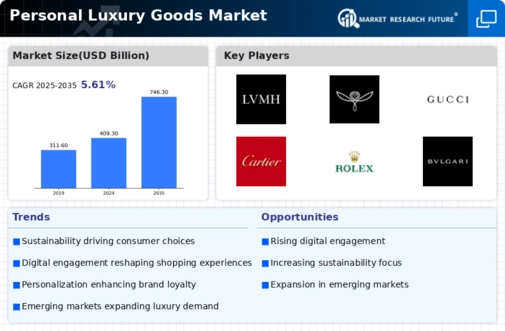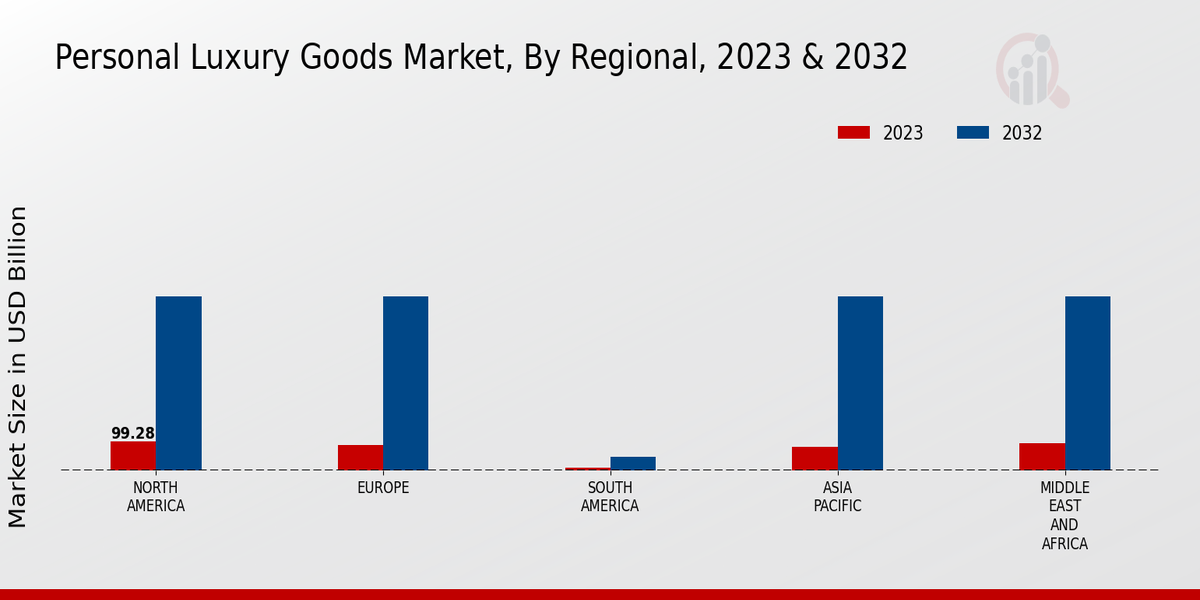E-commerce Expansion
The rapid expansion of e-commerce platforms plays a pivotal role in shaping the Global Personal Luxury Goods Market Industry. Online shopping offers consumers unparalleled convenience and access to a wider range of luxury products. Major luxury brands are increasingly investing in their online presence, enhancing user experience, and implementing targeted marketing strategies. This shift towards digital retailing is likely to attract a younger demographic, who are more inclined to shop online. As a result, the industry is expected to witness a compounded annual growth rate of 5.61% from 2025 to 2035, indicating a strong alignment with evolving consumer preferences.
Sustainability Trends
Sustainability has emerged as a crucial driver within the Global Personal Luxury Goods Market Industry, as consumers become more conscious of environmental and ethical considerations. Luxury brands are increasingly adopting sustainable practices, such as using eco-friendly materials and ensuring ethical sourcing. This shift not only appeals to environmentally aware consumers but also enhances brand loyalty. For example, brands like Stella McCartney have pioneered sustainable luxury fashion, setting a precedent for others in the industry. As sustainability becomes a core value, the market is likely to evolve, attracting consumers who prioritize ethical consumption.
Rising Disposable Income
The Global Personal Luxury Goods Market Industry experiences a notable boost due to the increasing disposable income among consumers, particularly in emerging economies. As individuals gain more financial freedom, they tend to allocate a portion of their income towards luxury goods, which are often perceived as status symbols. For instance, countries like China and India are witnessing a surge in middle-class consumers who are eager to invest in high-end products. This trend is expected to contribute significantly to the market's growth, with the industry projected to reach 409.3 USD Billion in 2024, reflecting a robust demand for luxury items.
Influence of Social Media
The influence of social media on consumer behavior significantly impacts the Global Personal Luxury Goods Market Industry. Platforms such as Instagram and TikTok serve as powerful marketing tools, enabling luxury brands to reach a broader audience and engage with potential customers. Influencers and celebrities often showcase luxury products, creating aspirational lifestyles that resonate with followers. This dynamic not only drives brand awareness but also stimulates demand for luxury goods among younger consumers. As social media continues to shape purchasing decisions, the industry is poised for growth, with projections indicating a market value of 746.3 USD Billion by 2035.
Market Growth Projections
The Global Personal Luxury Goods Market Industry is poised for substantial growth, with projections indicating a market value of 746.3 USD Billion by 2035. This growth trajectory is underpinned by various factors, including rising disposable incomes, e-commerce expansion, and shifting consumer preferences towards sustainability. The industry is expected to experience a compounded annual growth rate of 5.61% from 2025 to 2035, suggesting a robust demand for luxury goods in the coming years. As brands adapt to these evolving trends, the market is likely to witness a dynamic transformation, reflecting the changing landscape of luxury consumption.
Cultural Shifts Towards Luxury
Cultural shifts towards luxury consumption are increasingly evident in the Global Personal Luxury Goods Market Industry. As globalization fosters cross-cultural exchanges, luxury goods are becoming more accessible and desirable across diverse demographics. This trend is particularly pronounced in regions such as Asia-Pacific, where luxury consumption is on the rise due to changing societal values. The growing acceptance of luxury as a symbol of success and achievement is likely to drive demand. Consequently, the market is expected to flourish, with a projected value of 409.3 USD Billion in 2024, reflecting the evolving cultural landscape.






















